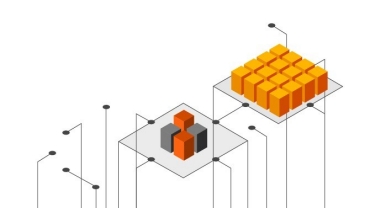
Embracing sustainable innovation: understanding the environmental impacts of blockchain technology
Blockchain technology has scaled rapidly in the last several years and continues to grow at an even faster pace across industries and countries. While there may be some concern over the environmental implications of the technology, most blockchain foundation’s report on their sustainability metrics and progress.
As a result of sustainability concerns and reporting, the EU MiCA Regulation included sustainability indicators in their mandatory reporting for crypto asset issuers and service providers. The requirements are detailed yet attainable, and further the sense of sustainable, climate-minded innovation.
To help aid in reporting, PwC has developed a first-of-its-kind assessment framework that allows organizations to evaluate their environmental footprint – the Blockchain Sustainability Framework . We have also provided an addendum to the framework for networks to use in reporting to the EU MiCAR standards.

Investors
35% of assets under management (AUM) have committed to 2030 emissions targets and net zero by 2050 or sooner
Customers
21% of the largest 2,000 public companies have committed to net zero targets, forcing peers an suppliers to adapt

Breaking down blockchain technology
Blockchain is a distributed ledger technology that maintains data through a peer-to-peer network of computers. Although it was originally developed to facilitate cryptocurrency transactions, blockchain has expanded to other capabilities. From verifying ownership of digital assets like NFTs to tracking items in a supply chain, its versatility can drive innovation and support business transformation.
Blockchain provides an opportunity for organizations to build trust through its decentralized, secure and transparent features, but its reputation as a threat to climate goals remains an obstacle.

The E in ESG: blockchain’s environmental impact
A closer look reveals that not all blockchain protocols are the same and may have different purposes and varying levels of environmental impact.
A key component of these protocols is the consensus mechanism, which is the defined approach to validate transactions and prevent malicious activity. Each consensus mechanism has advantages and disadvantages regarding decentralization, security and scalability, and adjustments to these trade-offs can unlock opportunities to make the respective blockchain more sustainable.
A thorough analysis of blockchain protocols can inform the decisions of regulators, users and the market as this technology continues to grow. Blockchain has significant potential to support sustainability, and it may prove to be a valuable tool to help companies advance environmental aspects of their ESG goals.
Building a foundation for sustainable innovation
Whether your organization is interested in contributing to a blockchain network, becoming an ecosystem participant, making a cryptocurrency investment or adopting NFTs into your business, PwC’s Blockchain Sustainability Framework can help inform stakeholders of potential environmental impacts.
Our framework measures the cumulative environmental footprint of blockchain operations, factoring in electricity use, greenhouse gas emissions, e-waste, embodied carbon and differences in consensus mechanisms.
Coupled with PwC’s ESG experience, our framework can help companies build a toolkit that provides:
- Environmental impact methodology to quantify your blockchain footprint
- Comparative assessments using a common framework to evaluate blockchains with a sustainability lens
- Blockchain simulation modeling to project future impacts as networks scale
- Blockchain-enabled solutions to power your organization

Use Case: Stellar Development Foundation
The Stellar Development Foundation (SDF) enlisted PwC US to assess the electricity consumption and emissions of the Stellar network. Using the Blockchain Sustainability Framework, the study found that the Stellar network currently uses an estimated 481,324 kilowatt hours (kWh) of electricity per year, resulting in approximately 173,243 kilograms (kg) of CO₂ emissions per year — that’s equivalent to the average CO₂ emissions produced by about 34 U.S. homes’ electricity use in one year. The data helped SDF establish a carbon dioxide removal (CDR) commitment that will help eliminate the network’s historical carbon footprint since 2015.











